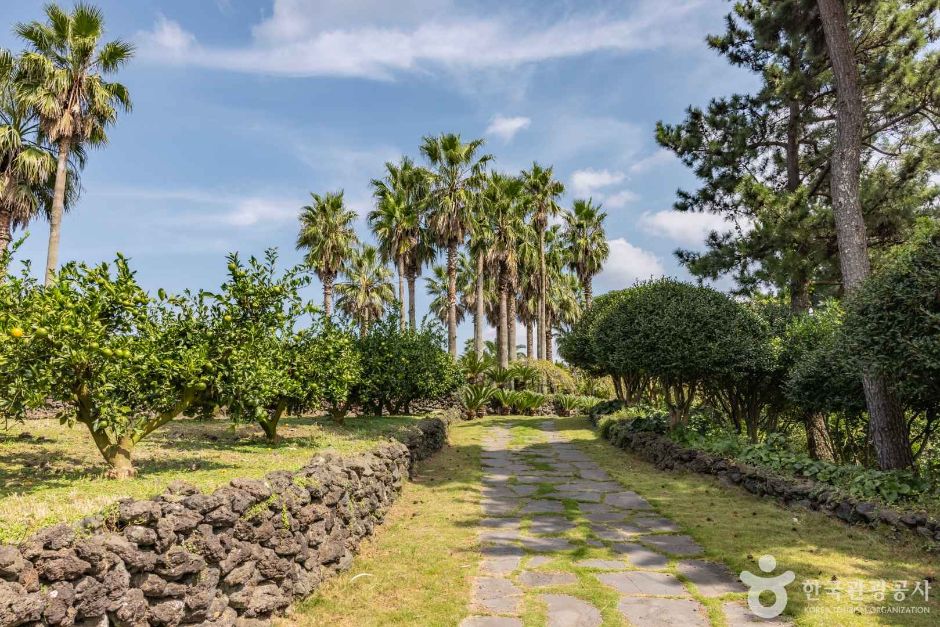Golfzon Market - Shinsegae Simon Jeju Outlets Branch [Tax Refund Shop] (골프존마켓 신세계사이먼 제주아울렛)
2.3Km 2024-06-27
38, Sinhwayeoksa-ro 304beon-gil, Andeok-myeon, Seogwipo-si, Jeju-do
-
Mulawear - Shinsegae Simon Jeju Outlets Branch [Tax Refund Shop] (뮬라웨어 신세계사이먼 제주아울렛)
2.3Km 2024-07-01
38, Sinhwayeoksa-ro 304beon-gil, Andeok-myeon, Seogwipo-si, Jeju-do
-
Golden Goose - Shinsegae Simon Jeju Outlets Branch [Tax Refund Shop] (골든구스 신세계사이먼 제주아울렛)
2.3Km 2024-06-27
38, Sinhwayeoksa-ro 304beon-gil, Andeok-myeon, Seogwipo-si, Jeju-do
-
Songzio - Shinsegae Simon Jeju Outlets Branch [Tax Refund Shop] (송지오 신세계사이먼 제주아울렛)
2.3Km 2024-06-27
38, Sinhwayeoksa-ro 304beon-gil, Andeok-myeon, Seogwipo-si, Jeju-do
-
Loewe - Shinsegae Simon Jeju Outlets Branch [Tax Refund Shop] (로에베 신세계사이먼 제주아울렛)
2.3Km 2024-06-26
38, Sinhwayeoksa-ro 304beon-gil, Andeok-myeon, Seogwipo-si, Jeju-do
-
S.I.Village - Shinsegae Simon Jeju Outlets Branch [Tax Refund Shop] (S I 빌리지 신세계사이먼 제주아울렛)
2.3Km 2024-06-27
38, Sinhwayeoksa-ro 304beon-gil, Andeok-myeon, Seogwipo-si, Jeju-do
-
Jillstuart - Shinsegae Simon Jeju Outlets Branch [Tax Refund Shop] (질 스튜어트 신세계사이먼 제주아울렛)
2.3Km 2024-06-27
38, Sinhwayeoksa-ro 304beon-gil, Andeok-myeon, Seogwipo-si, Jeju-do
-
maje - Shinsegae Simon Jeju Outlets Branch [Tax Refund Shop] (maje 신세계사이먼 제주아울렛)
2.3Km 2024-06-26
38, Sinhwayeoksa-ro 304beon-gil, Andeok-myeon, Seogwipo-si, Jeju-do
-
CU - Jeju Shinhwa Villas Branch [Tax Refund Shop] (cu제주신화빌라스점)
2.3Km 2024-06-26
139, Sinhwayeoksa-ro 304beon-gil, Andeok-myeon, Seogwipo-si, Jeju-do
-
Norimae Park (노리매공원)
2.7Km 2024-10-31
2260-15 Jungsanganseo-ro, Daejeong-eup, Seogwipo-si, Jeju-do
Norimae Park gets its name from the Korean words for "play" and "apricot." As is expected from the name, the park is filled with apricot trees as well as other blossoms like daffodils, peonies, camelia trees and more. Furthermore, the park is decorated with Jeju's famous stones and a man-made waterfall and pond.
![Golfzon Market - Shinsegae Simon Jeju Outlets Branch [Tax Refund Shop] (골프존마켓 신세계사이먼 제주아울렛)](http://tong.visitkorea.or.kr/cms/resource/31/3313231_image2_1.jpeg)
![Mulawear - Shinsegae Simon Jeju Outlets Branch [Tax Refund Shop] (뮬라웨어 신세계사이먼 제주아울렛)](http://tong.visitkorea.or.kr/cms/resource/96/3314796_image2_1.jpg)
![Golden Goose - Shinsegae Simon Jeju Outlets Branch [Tax Refund Shop] (골든구스 신세계사이먼 제주아울렛)](http://tong.visitkorea.or.kr/cms/resource/54/3313654_image2_1.jpg)
![Songzio - Shinsegae Simon Jeju Outlets Branch [Tax Refund Shop] (송지오 신세계사이먼 제주아울렛)](http://tong.visitkorea.or.kr/cms/resource/65/3313465_image2_1.jpeg)
![Loewe - Shinsegae Simon Jeju Outlets Branch [Tax Refund Shop] (로에베 신세계사이먼 제주아울렛)](http://tong.visitkorea.or.kr/cms/resource/76/3313476_image2_1.jpg)
![S.I.Village - Shinsegae Simon Jeju Outlets Branch [Tax Refund Shop] (S I 빌리지 신세계사이먼 제주아울렛)](http://tong.visitkorea.or.kr/cms/resource/40/3313840_image2_1.jpg)
![Jillstuart - Shinsegae Simon Jeju Outlets Branch [Tax Refund Shop] (질 스튜어트 신세계사이먼 제주아울렛)](http://tong.visitkorea.or.kr/cms/resource/26/3313126_image2_1.jpeg)
![maje - Shinsegae Simon Jeju Outlets Branch [Tax Refund Shop] (maje 신세계사이먼 제주아울렛)](http://tong.visitkorea.or.kr/cms/resource/42/3313042_image2_1.jpeg)


 English
English
 한국어
한국어 日本語
日本語 中文(简体)
中文(简体) Deutsch
Deutsch Français
Français Español
Español Русский
Русский